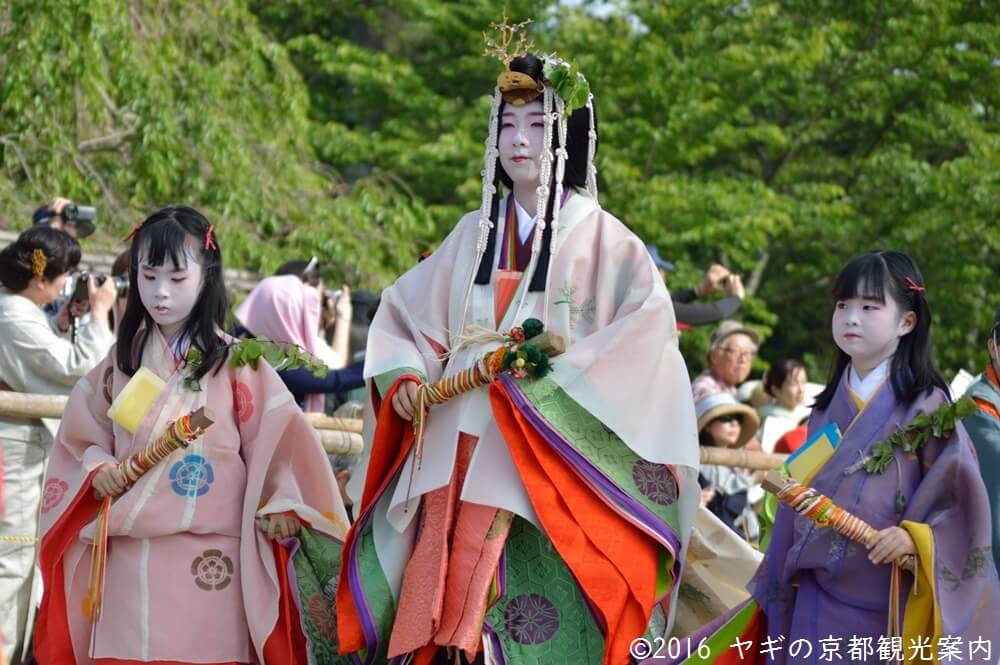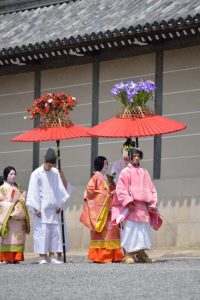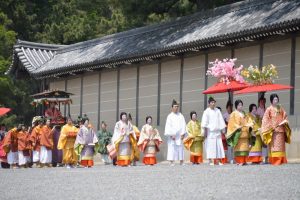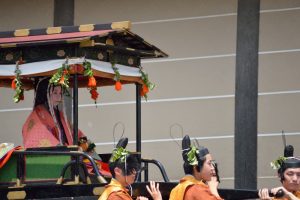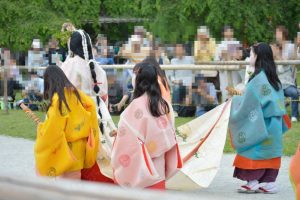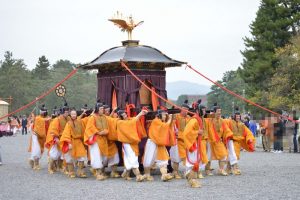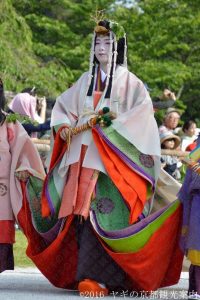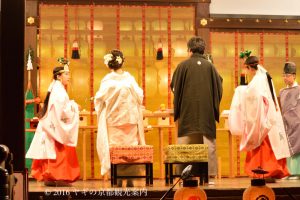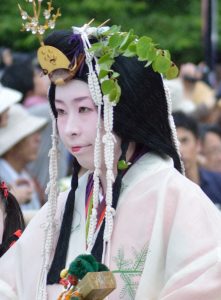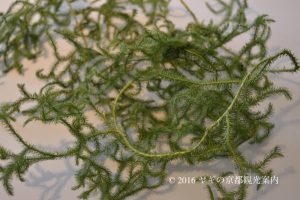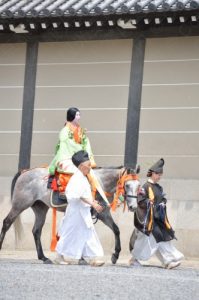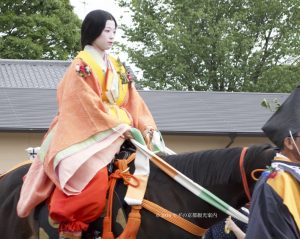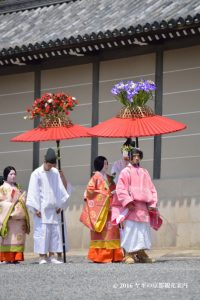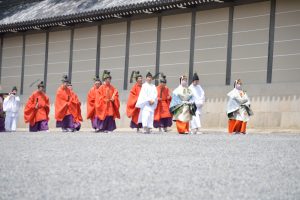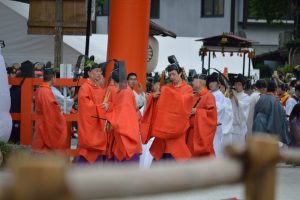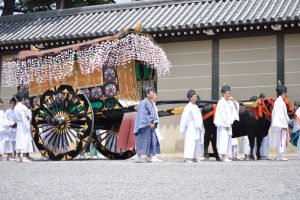THE GIST OF THIS ARTICLE
- Page 1 Schedule, What is Aoi Matsuri?
- Page 2 Saioh Dai 斎王代
- Page 3 Parade1: Chokushidai Retsu 勅使代行列
- Page 4 Parade2: Saiohdai Retsu 斎王代列
- Page 5 Shato no Gi 社頭の儀
- Page 6 Ceremonies prior to Aoi Matsuri
- Page 7 How to see the parade?
The following is the contents of this article.
斎王代列/Sai-oh-dai retsu
命婦/Myo-bu
They are high-ranked female officials serve for the imperial court.
斎王代/Saioh-dai
The most famous person in the parade. She is a priestess attends Aoi matsuri on behalf of the emperor.(He is the highest ranked Shinto priest.) The litter she is on is called “O-yoyo”, or “Shihoh goshi”.
In the the Heian period, the emperor, empress, and Saioh had a privilege to be on litter. (The photo above is a litter for the emperor in Jidai matsuri festival.)
She dresses herself in “Jyuni-hitoe”, the full dress of lady in Heian period. “Jyuni-hitoe” literary means “A dress consists of twelve layers of robes” but the word “Jyuni (12 in Japanese) actually means “many”. The video above shows you the way to wear it. The dress is so thick and heavy and has so long tail that she cannot walk alone. So these little ladies hold the tail of the dress. This “Jyuni-hitoe” is a de facto name of “Itsutsu ginu karaginumo”.
She wears white robe over “Jyuni-hitoe”. The robe reveals that she is attending ritual because it is worn when priestess is in sacred place. The stick she hold is “Hioh-gi”, the wooden fan.
Let me show you examples. The priestess dresses herself in the ordinary outfit for priestess.
On the other hand, the priestesses in the picture wear white robes. They serve for a wedding ritual.
She ties up her hair in “Osuberakashi”, a traditional hairstyle of court lady. The golden plate with an antler on her hair is “Kokoro-ba”. It is an ornament priestess wears. The antler stands for a plum tree.
The white cords hanging on her hair is “Hikage no ito”. In the days of old, Sai-oh wore plant called “Higeno kazura” instead.
采女/Uneme
She is a priestess serves for “Saioh-dai”. In ancient times, Uneme helped Saioh in rituals in Kamo shrines.
騎女/Nunanori onna
They also are priestesses serve for “Saioh-dai”.
Their robes has long tails. When they are on horses, they were folded.
内侍/Naishi
They are female officials serve for the Imperial court.
蔵人陪従/Kurodo no beiju
They are musicians serve for Sai-oh.
斎王代の牛車/Gissya for saioh-dai
The Gissya is as large as that of Konoe-tsukai-dai but “Sai-oh” would ride on a smaller Gissya called “Itoge-kuruma”.

